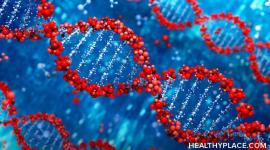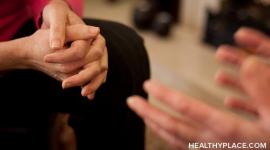Types of OCD (Obsessive-Compulsive Disorders)

Obsessive-compulsive disorders now have their own chapter in the DSM-V. Prior to the update, OCD fell under anxiety disorders and the other related disorders were scattered in various places in the DSM. Obsessive-compulsive disorder information, diagnostic criteria, and related disorders now appear together, making proper diagnosis and treatment easier.
Types of Obsessive-Compulsive Disorder
Aside from primary OCD, there are six other types of obsessive-compulsive disorders included in the DSM-V. Primary OCD is characterized by obsessive thoughts that may involve a fear of contamination from germs or dangerous chemical substances, fear of accidentally harming others, urge to harm a loved one, unwanted sexual or religious thoughts, preoccupation with symmetry and neatness. People with OCD try to vanquish the disturbing, repetitive thoughts with ritualistic compulsive behaviors, such as excessive hand washing, counting, ordering, checking and re-checking locks and other household appliances, repetitive activities, and silent mental rituals such as repeating nonsense words.
The other types of obsessive-compulsive disorders include:
- Body Dysmorphic Disorder – characterized by repetitive physical or mental acts due to fixation with a perceived defect in physical appearance. People with BDD repeatedly check and focus on their bodies and the way they look. They may cover up the area they perceive as flawed or leave home less often than usual to keep others from seeing the defect. They may also undergo repeated and unnecessary plastic surgery. People with BDD may truly believe they have the perceived defect even when no defect is present or may have some level of insight that their preoccupation and subsequent behaviors are excessive.
- Hoarding Disorder – characterized by intense difficulty discarding or parting with personal items, regardless of actual monetary value, because of a belief that they must save them. The thought of parting with these items causes severe distress. This results in the accumulation of a massive number of possessions that literally fill up living space of the home and prevent normal use of the living space.
- Trichotillomania (Hair Pulling Disorder) – characterized by repeatedly pulling out of hair that results in noticeable hair loss. People with HPD experience increased anxiety prior to pulling or when attempting to stop pulling, but feel relief when hair pulling. People with hair pulling disorder feel considerable distress about their compulsion. Frequently, these people inspect the hair root, chew on or eat hair, twirl the hair, or pull the hair between teeth.
- Excoriation (Skin Picking) Disorder – newly added to the DSM-V, excoriation disorder is characterized by a preoccupation with picking at skin that results in lesions and infections. People with excoriation disorder experience severe distress due to their compulsive picking, but feel powerless to break the obsessive cycle that leads to picking.
- Substance/Medication-Induced Obsessive-Compulsive and Related Disorder – This designation recognizes that substances, medications, and some medical conditions can cause symptoms similar to those associated with primary OCD and related disorders.
- Other Specified and Unspecified Obsessive-Compulsive and Related Disorders – this category can include obsessive jealousy characterized by excessive focus on a partner's faithfulness, and body-focused repetitive disorders (other than hair pulling or skin picking) like nail biting or lip and cheek chewing. These criteria must be persistent and present even after repeated attempts to stop the behavior.
APA Reference
Gluck, S.
(2022, January 10). Types of OCD (Obsessive-Compulsive Disorders), HealthyPlace. Retrieved
on 2025, March 28 from https://www.healthyplace.com/ocd-related-disorders/ocd/types-of-ocd-obsessive-compulsive-disorders


